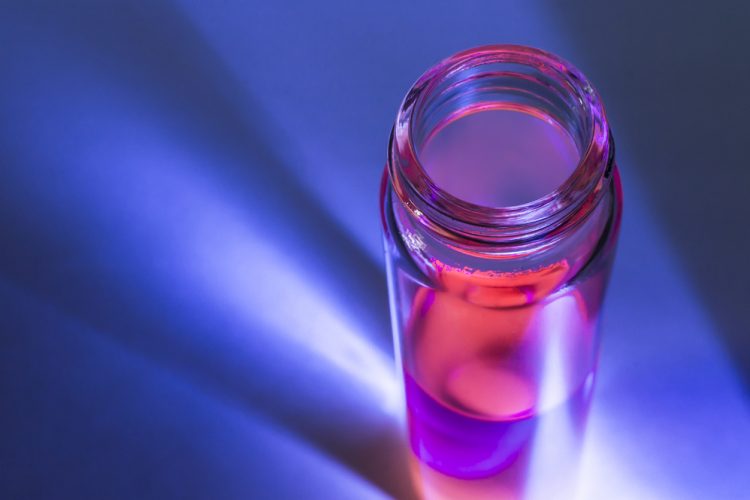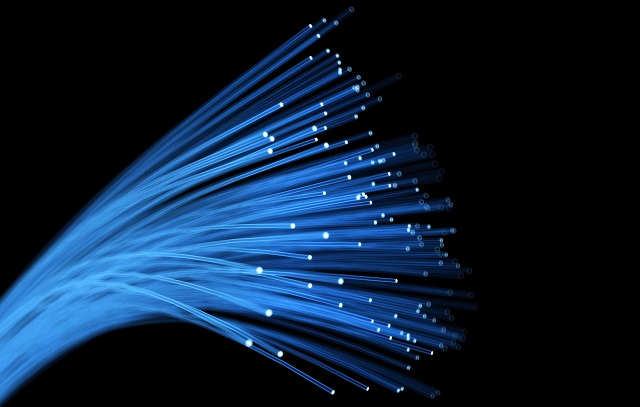 There are a variety of ways that researchers today can measure oxygenation of tissue in vivo. Unfortunately, while a range of options do exist, choosing which technology to use to measure tissue oxygenation is often difficult, even to those who have years of experience in the field. Here, we cover the four most prominent ways researchers today measure in vivo tissue oxygen, namely using electrodes or phosphorescent probes and sensors. Firstly, we discuss the chemical technology employed by each system and how this works for tissue oxygenation measurements. Finally, we compare and contrast these methods in detail. Researchers reading this article should leave with a better understanding of each method and should have a clearer idea of which will work best for their specific research protocols.
There are a variety of ways that researchers today can measure oxygenation of tissue in vivo. Unfortunately, while a range of options do exist, choosing which technology to use to measure tissue oxygenation is often difficult, even to those who have years of experience in the field. Here, we cover the four most prominent ways researchers today measure in vivo tissue oxygen, namely using electrodes or phosphorescent probes and sensors. Firstly, we discuss the chemical technology employed by each system and how this works for tissue oxygenation measurements. Finally, we compare and contrast these methods in detail. Researchers reading this article should leave with a better understanding of each method and should have a clearer idea of which will work best for their specific research protocols.
Electrode sensors
Clarke-type O2 electrode sensors (also known as amperometric sensors) are electrochemical sensing instruments in which the chemical element of interest passes through a membrane before an oxidation or reduction measurement takes place. The sensors then produce an electrical current as a function of the analyte concentration and use a picoammeter to detect an electrical current.
For these devices to detect oxygen levels specifically, oxygen must leave the tissue and pass through a silicon membrane into an alkaline electrolyte substance. The oxygen then reacts with a gold cathode to produce an electrical current. The strength of this current is linearly proportional to the partial pressure of oxygen in the tissue. The simple interpretation of this is; more oxygen within a tissue leads to a higher reaction rate with the gold, thus translating to a higher electrical current.1
The other important element of electrode sensors is the reference anode electrode. The reference electrode is the oxidation element in the sensor and its task is to complete the electrical circuit with the gold cathode. These sensors must be inserted into the tissue to create interstitial contact which can cause acute tissue damage; however, they have high spatial precision and fairly high temporal resolution. The caveat is that this method actually consumes a small portion of the tissue oxygen when it crosses the cathode membrane and this can offer disadvantages in accuracy of O2 measurements, especially when measuring oxygen consumption in hypoxic environments.2
It is also worth noting that these electrode-type sensors determine the partial pressure of a gas (in this case oxygen) and not its absolute concentration. To know the O2 concentration, the temperature at the site of measurement in the tissue must also be determined as the diffusion of O2 across the sensor membrane is directly dependent on temperature. Oxygen microsensors are usually calibrated at a known temperature, so all resulting oxygen measurements are automatically adjusted to that temperature. When you’re working in vivo, many researchers assume that the tissue temperature is 37°C, but in practice we know that during surgery any tissue that interfaces with air or room-temperature saline tends to be several degrees cooler than core body temperature. These slightly cooler temperatures in skin and exposed tissues need to be accounted for to reduce error.2
Carbon Paste Electrodes (CPEs) work in a similar way by creating an electrical current, but these sensors do not have an external membrane that requires diffusion of O2 across it. These sensors use a graphite-silicone paste mixture that interfaces directly with the tissue of interest. At the surface of the carbon-paste, an electrochemical reduction of O2 is a two-electron process that produces H2O2:
O₂ + 2H⁺ + 2e⁻ -> H₂O₂
H₂O₂+ 2H⁺ + 2e⁻ -> 2H₂O
CPEs still consume oxygen at the site of measurement, so they pose a similar amount of error as the Clark-type sensors in terms of oxygen consumption to complete the measure, but they are less sensitive to the temperature at the measurement site. 3
Phosphorescent sensors
Oxygen is able to efficiently quench the fluorescence and phosphorescence of certain luminophores. This effect, called “dynamic fluorescence quenching”, describes the collision of an oxygen molecule with a fluorophore in its excited state and leads to a non-radiative transfer of energy. The degree of fluorescence quenching relates to the frequency of collisions. From very basic understanding of chemical reactions, we can relate the frequency of collisions to the concentration, pressure, and temperature of the oxygen-containing media.
The quenching process is essentially a collisional dynamic where the energy from the excited fluorescent dye is transferred to the oxygen molecule during a collision, hence reducing the emission intensity as well as the fluorescent lifetime of the photons. The more collisions, the faster the decay time. It is established upon the principle that the presence of molecular dissolved oxygen in tissues or fluids can terminate or quench light emitted by a fluorescent compound dye. The quenching of the fluorescent light is directly proportional to the partial pressure of oxygen in the vicinity of the dye. Similar to the considerations that must be made with oxygen electrode sensors, absolute concentration of oxygen in a tissue requires a temperature measurement to be accurate.
There are two common methods for using phosphorescent quenching technology: fibre-optic sensors and injectable dyes.
 Injectable dye functions in a similar way to its fibre-optic cousin, however there are a few practical considerations that must be made when using this dye:
Injectable dye functions in a similar way to its fibre-optic cousin, however there are a few practical considerations that must be made when using this dye:
- When injected, does the dye actually infiltrate the tissue of interest? For studies involving blood oxygenation at different organ sites, this works quite well after an IV injection, however for brain or tissue oxygenation studies, the injectable dye may not make it from the blood stream into the tissue of interest. Alternatively, the dye can be directly injected into the tissue of interest, but it is difficult to know the exact injection location, how that bolus injection will affect the tissue, and where the dye will actually end up if it diffuses throughout the vicinity of the injection site. An IV injection offers a very minimally invasive method but a more diffuse and non-localized O2 measurement, while the tissue injection poses a risk of acutely damaging the tissue of interest while still not knowing if the dye remains in the desired location.
- If the dye is in the correct location, will the excitation laser light actually reach the dye and will the detector be able to read the decay time? With depth, laser light will scatter increasingly until it eventually cannot penetrate any further into the tissue. If the site of interest for oxygen measurements is too deep for the laser to reach, the dye will not fluoresce and the oxygen measurement cannot take place. Pigmented tissues and highly vascularized tissues tend to have poorer penetration depths than more diffuse and less pigmented tissues. This is something to consider when deciding which method to use. This same consideration must also be made for the detection of the decay time as well.
- What is the temperature of the measurement site? You can assume that the tissue temperature is 37°C for a non-invasive approach, but if it varies you may risk collecting pO2 measurements that are not accurate. If you use an invasive thermocouple at the site of interest, you forego the advantage on the non-invasive IV injection while still not having the spatial precision of a fibre-optic or electrode sensor.
While this method can give you a larger measurement area of tissue oxygenation and can be very minimally invasive, it is less spatially precise than an invasive electrode sensor or a fibre-optic phosphorescent sensor. It has a similar temporal resolution to the electrode sensors, giving O2 measurements in seconds but offers the advantage of zero oxygen consumption at the measurement site.
 Fibre-optic phosphorescent sensors are optical devices with a sensing tip that contains a platinum-based fluorescent dye held within a silicone matrix. When the dye is excited with light from a laser source through the fibre, it fluoresces just like the previously discussed injectable soluble dyes. This fluorescent light is returned to a signal detector processor using that same optical fibre and establishes the fluorescent decay time. From this, the corresponding partial pressure of oxygen is obtained. As the partial pressure of oxygen in the vicinity of the sensing tip decreases, the extent of quenching decreases thus increasing the fluorescence decay time. This method offers many advantages for deep tissue oxygen measurement sites that the soluble dye methods struggle to reach.
Fibre-optic phosphorescent sensors are optical devices with a sensing tip that contains a platinum-based fluorescent dye held within a silicone matrix. When the dye is excited with light from a laser source through the fibre, it fluoresces just like the previously discussed injectable soluble dyes. This fluorescent light is returned to a signal detector processor using that same optical fibre and establishes the fluorescent decay time. From this, the corresponding partial pressure of oxygen is obtained. As the partial pressure of oxygen in the vicinity of the sensing tip decreases, the extent of quenching decreases thus increasing the fluorescence decay time. This method offers many advantages for deep tissue oxygen measurement sites that the soluble dye methods struggle to reach.
While these sensors still cause acute tissue damage like the electrode sensors, the spatial precision and accuracy of the measure is preserved. The advantage that these sensors offer over an electrode sensor is that this chemical process of phosphorescence quenching technology does not consume oxygen, so in hypoxic environments when O2 consumption needs to be precisely measured, these sensors can do so with minimal error or compensation calculations.
Let’s compare and contrast…
While the overall goal of these technologies is essentially the same, to measure oxygen levels in vivo, there are a few things that distinguish them from one another. The table below summarizes these characteristics2.
| Electrode Sensors | Injectable/Soluble Phosphorescent probes | Fibre-optic Phosphorescent Probes | |
| Parameter measured | pO2 | ·pO2 | pO2 |
| Mechanism | Current generated by reduction of O2 | Phosphorescent Lifetime Principle | Phosphorescent Lifetime Principle |
| Temporal Resolution | Seconds | Seconds | 0.5s |
| Measurement Site | Interstitial volume in contact with sensor tip | Site of dye AND excitation light | Interstitial volume in contact with sensor tip |
| Spatial Resolution | 3µm-100mm, sensor size dependent | µL of injected dye and dispersion in tissue of interest | 200µm-8mm2, sensor size dependent |
Approx. pO2 Resolution | 0.1mmHg | 0.1mmHg | 0.1mmHg |
| Advantages |
|
|
|
| Limitations |
|
|
|
For researchers interested in blood oxygenation levels at different sites, injectable phosphorescent dyes are likely going to be the best method and offer a fantastic non-invasive approach. This approach allows researchers to monitor dye dispersion over time and a second IV injection can be used for longer-term measurements to avoid photobleaching of the dye. Blood oxygen measurements can be made from many sites by just changing the location of excitation and detection.2
For studies involving long term measurements of pO2 in tissue, electrode sensors are a great way to measure pO2 longitudinally in a telemetry study because the electrode can be calibrated upon implantation and the telemeter can monitor pO2 changes over time without the researcher even handling the animal. It offers great spatial resolution and the sensor will not photobleach over time.4
For acute pO2 measures in tissues that are deep within the body or that require precise spatial AND temporal resolution, like kidney cortex vs. medulla pO2 measurements, fibre-optic sensors are likely the best method. They offer minimal error because they do not consume O2 which allows for the best sensitivity at physiological and hypoxic conditions. These sensors, while minimally invasive, also allow for researchers to monitor pO2 changes very quickly.5 Applied treatments during procedures that cause very rapid and acute physiological responses, like IV drug injections, can be monitored precisely and at a speed that is relevant to rapid physiological changes. These sensors also do not require continuous re-calibration as they come factory calibrated. This advantage helps researchers save time between animals while also ensuring that measurements between different subjects are comparable and easy to standardize. This also eliminates calibration error by the user. This method is appropriate for the widest variety of tissue oxygenation studies and offers a user-friendly option for researchers that have several research goals and tissues of interest.6
Overall, each method offers its own pros and cons and has a niche application where it outperforms other methods. When choosing a method for your work, consider the implications of each technology for your application and ensure that the data you wish to collect can actually be obtained with the method you choose!
To learn more about Scintica Instrumentation and all the products we carry visit our contact page.
References:
- Dings, J., Meixensberger, J., Jäger, A. & Roosen, K. Clinical experience with 118 brain tissue oxygen partial pressure catheter probes. Neurosurgery 43, 1082–1094 (1998).
- Springett, R. & Swartz, H. M. Measurements of oxygen in vivo: Overview and perspectives on methods to measure oxygen within cells and tissues. Antioxidants and Redox Signaling 9, 1295–1301 (2007).
- Bolger, F. B. et al. Characterisation of carbon paste electrodes for real-time amperometric monitoring of brain tissue oxygen. J. Neurosci. Methods (2011). doi:10.1016/j.jneumeth.2010.11.013
- Emans, T. W., Janssen, B. J., Joles, J. A. & Paul Krediet, C. T. Circadian rhythm in kidney tissue oxygenation in the rat. Front. Physiol. 8, 1–7 (2017).
- Dunn, J. F., Wu, Y., Zhao, Z., Srinivasan, S. & Natah, S. S. Training the Brain to Survive Stroke. PLoS One 7, 1–9 (2012).
- Calzavacca, P., Evans, R. G., Bailey, M., Bellomo, R. & May, C. N. Cortical and medullary tissue perfusion and oxygenation in experimental septic acute kidney injury. Crit. Care Med. 43, e431–e439 (2015).
